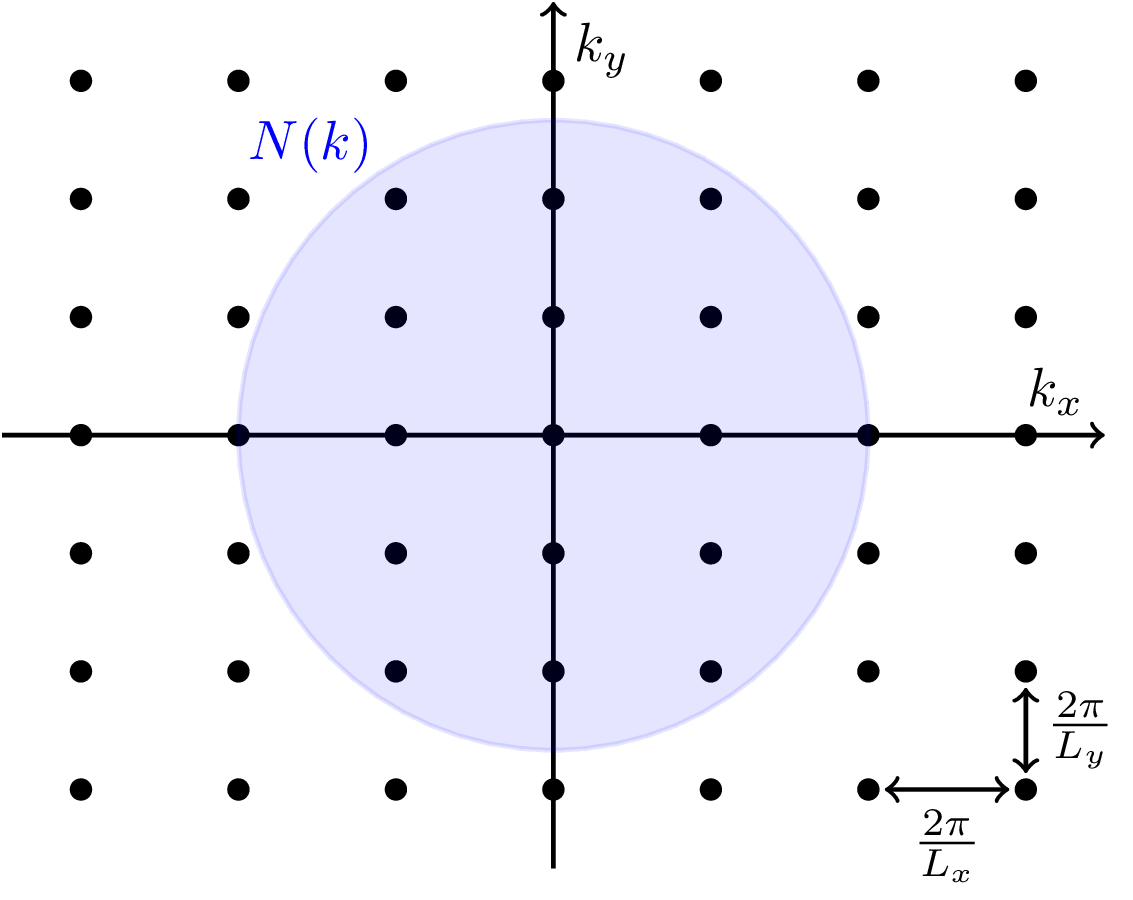k-Space
The $k$-space region of wave vectors up to a given magnitude is a disk of area $\pi k^2$. The $k$-space area occupied by a single particle state is $$ \frac{1}{2} \frac{2 \pi}{L_x} \frac{2 \pi}{L_y} = \frac{2 \pi^2}{A}, $$ where the factor of $\frac{1}{2}$ is due to the spin degeneracy $g_s = 2 s + 1 = 2$. The number of states with wave vector magnitude smaller than $k$ is $$ N(k) = \frac{\pi k^2}{2 \pi^2/A} = \frac{A k^2}{2 \pi}. $$ $k$-space is used extensively in solid state physics e.g. to visualize the energy bands of a material as a function of electron momentum. In position space, the position-energy dispersion would just be a probability blur.

Download
Code
k-space.typ (63 lines)
k-space.tex (27 lines)